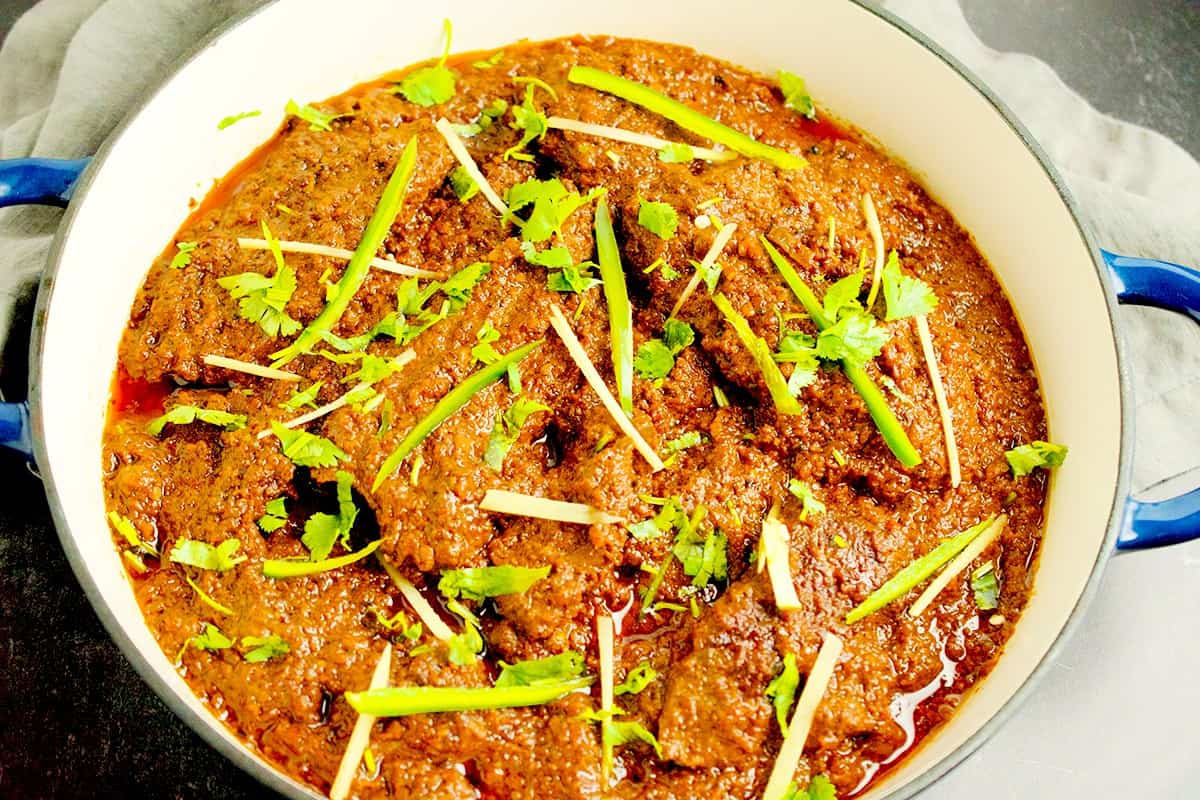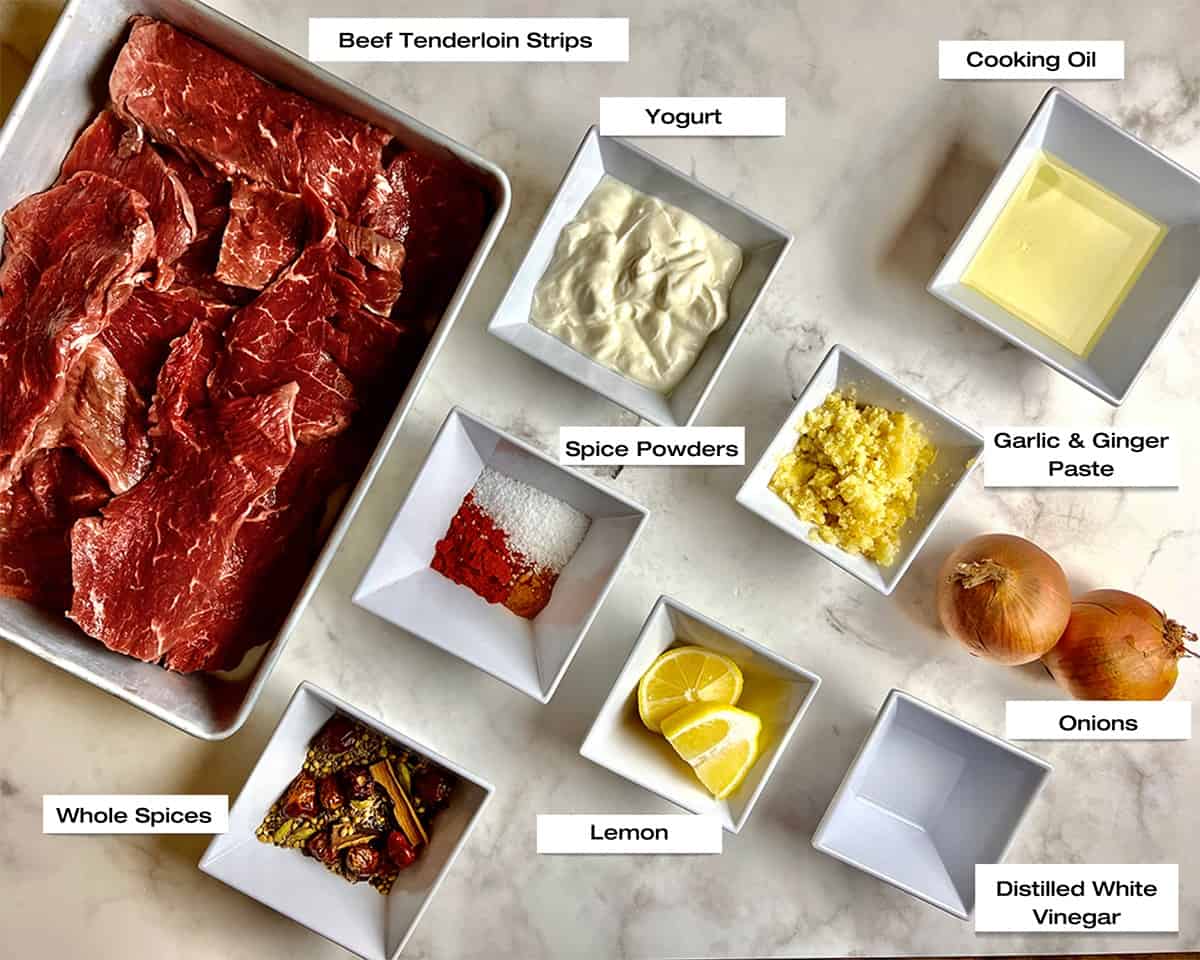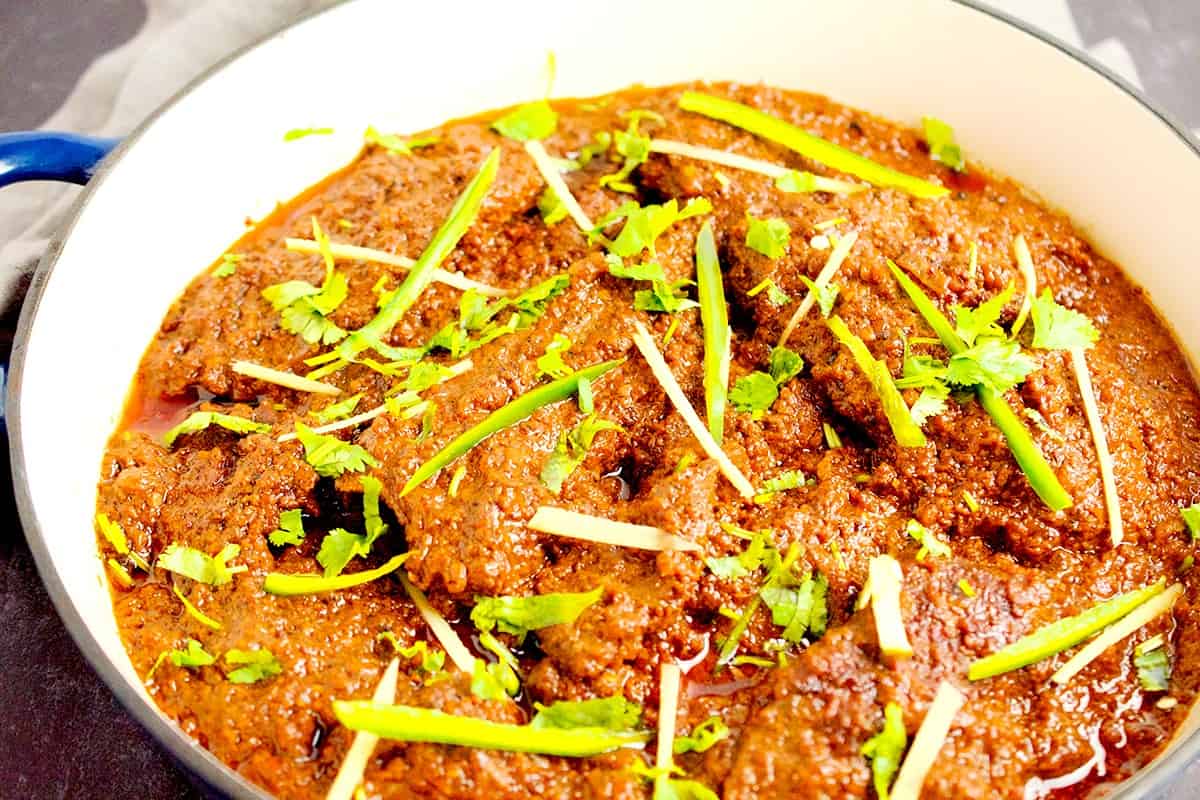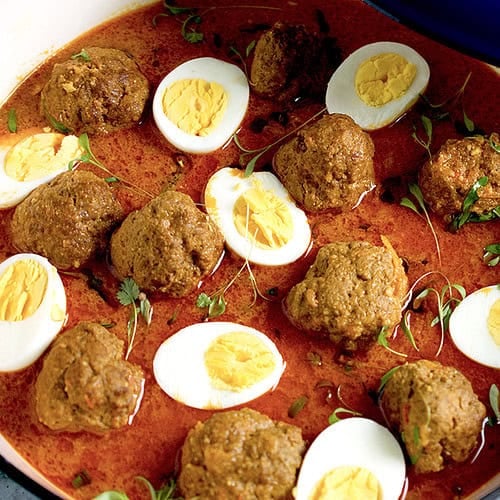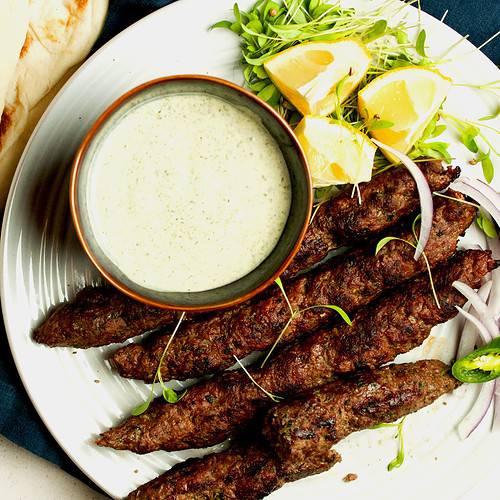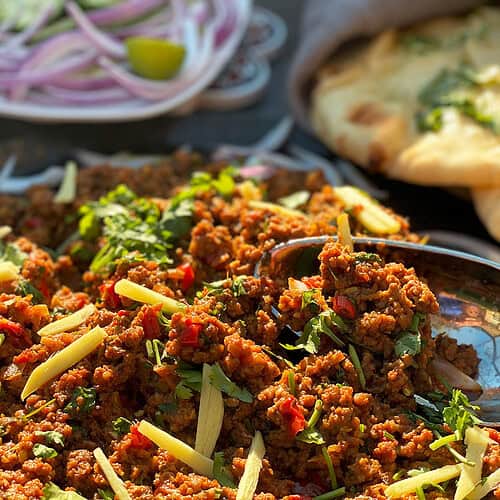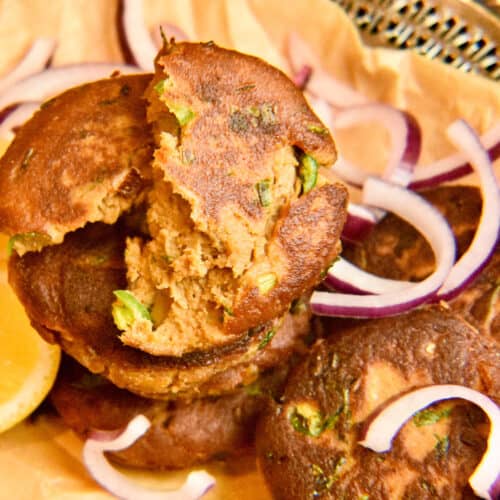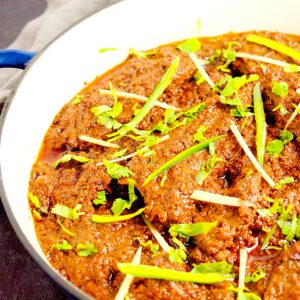The word “Pasanda” is derived from the word “pasand”, which means to like. The word is a reference to the fact that the choicest cut of meat is used for this recipe. Many variations of the beef pasanda recipe exist, such as badam pasanda, mirchi pasanda, and chicken pasanda, to name a few. My personal favorite is these beef pasandas, served with some lentils, naan or basmati rice, and a glass of delicious mango juice. Follow this up with some refreshing kulfi for a perfect finish to dinner.
Why you’ll love this beef pasanda recipe
Delicious - This recipe is like nothing you’ve tasted before! Each pasanda is coated in a mouthwatering curry that hits all the right notes. Very little active cooking required - This beef pasanda recipe requires only 15 minutes and then 30 minutes of active cooking time, at two separate intervals. Not too spicy - The spices used are flavorful and aromatic without being spicy. This is a mild curry, relative to others like karahi gosht, haleem, or nihari. Make ahead recipe - The meat can be marinated well ahead of time and frozen. On the day you want to serve your beef pasanda recipe, simply defrost, fry the filets, and then slow cook to excellence.
Ingredient notes for the beef pasanda recipe
Beef Tenderloin Strips - For this recipe buy beef tenderloin and have your butcher cut them into 2"x4" strips that are ideally ⅛" thick. The thinner the strips the better the final results, just like in Bihari Kebab. The thickest strips I’ve ever worked with for my pasanda recipe are ¼" thick. Yogurt - Full-fat plain yogurt is the best one to use due to its creamy texture. I always recommend it for all my recipes, like my chicken tikka masala. Vinegar - White distilled vinegar is essential as a tenderizer and for flavor. Lemons - These are also a tenderizer and add to the flavor. Whole spices - The whole spices mix to provide sweet, citrusy, floral, and pungent notes to this recipe. When mixed with creamy yogurt, nutty poppy seeds, spice powders, acidic vinegar, and lemon, the result is delectable.
Please see the recipe card at the bottom of this post for the complete list of ingredients with measurements plus recipe instructions.
Substitutions & variations
Use papaya as a tenderizer - I like to use poppy seeds as my tenderizer as I love the nutty flavor they add. However, if you want, you can use the more traditional 2 tbsp raw papaya paste in the pasanda marinade instead. Try a different meat - A leg of lamb or goat can make a great pasanda, as does chicken breast. Add some almonds or Cashews - Ground almonds or cashews act in the same manner as the poppy seeds, to help flavor and thicken the pasanda curry. I like the milder taste of poppy seeds as well as the fact that I don’t have to worry about serving them to people with nut allergies. Feel free to swap and try nuts. Add some besan - many people add besan, chickpea powder, to their pasanda recipe. This is a great idea if you can’t source poppy seeds and have a nut allergy. Make sure to swap with the poppy seeds. Adding both can make the curry too dry. Add some coconut powder - Yet another thickener that is safe for nut allergies, this tastes delicious in a pasanda curry too. Swap with the poppy seeds or add half and half of each.
Step-by-step instructions
The spice blend & marinade
Dry roast all the spices in a nonstick frying pan. Make sure the pan is well heated and that you stir constantly while roasting to prevent the spices from burning. Turn your stove off as soon as the spices start to smoke slightly and change color. Cool for 30 seconds and then grind these roasted spices. A coarse consistency is what we’re aiming for. Stir in this ground mixture with the spice powders and mix well to prepare your pasanda spice blend. Mix this blend with the yogurt, vinegar, lemon juice, garlic, and ginger paste.
Tenderizing & Marinating the Pasandas
Once everything is mixed and whipped to a creamy consistency, set this marinade aside. Take the pasanda strips and place each one, individually on a firm surface in preparation to manually tenderize them. Use a meat tenderizer to pound the filets till they are twice as long and wide and half as thin. Then place the tenderized pasanda strips in a container and coat them with the marinade. Cover and set aside for a minimum of 4 hours and preferably overnight.
Frying the beef filets
When you’re ready to cook the pasandas, shallow fry each strip of meat in a wide skillet. Cook till the strips are nicely browned on both sides. For best results, work in batches, 2-3 strips at a time, depending on the size of your strips and pan. This will require some patience but the pasandas will be more succulent this way. Once done, set them aside as you start preparing the curry.
Preparing the curry base
Take the residual marinade and stir it. Fry some thinly sliced onions till they’re well caramelized. Add these to the marinade and mix well. Puree in a food processor, blender, or by using an immersion blender.
Finishing the beef pasanda recipe
Preheat some oil in a pan and add this puree to it. Add 2 cups of water to create a liquid mixture. Cover and slow-cook the browned meat slices in this till the pasanda meat is tender enough to separate with a fork. The pasanda curry is on the dry side so once the meat is cooked, uncover and cook till all the water evaporates and the gravy just coats the meat.
Expert Tips
For more Pakistani recipes like this, check out 20 popular Pakistani recipes. If you decide to try this recipe, Please don’t forget to leave a rating and comment below! If you take a picture then tag me on Instagram! Thank You!
